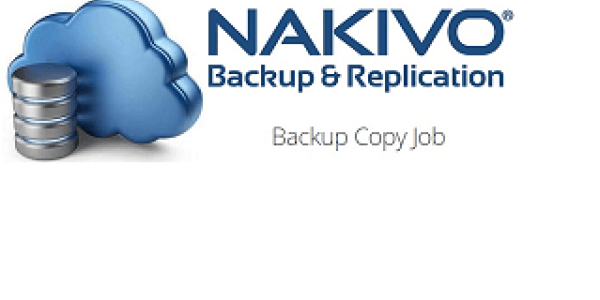NAKIVO Backup and Replication is an all-in-one solution designed to back up, replicate, and recover VMs and cloud instances. The new version 8.1 changes the traditional concept of back up. It uses Policy-Based Data protection. You can set up policies for the data protection and have the corresponding VMs protected automatically.
Cloud or Virtual Machine (VM) back up is nothing but a solution to create a back up for the data. It involves sending a copy of the data over a public network to an off-site server. The server is generally hosted by a third-party service provider. A customer fee is charged based on the capacity, bandwidth, or the number of users. Creating a cloud back up will ensure data protection and decrease the workload on the staff. Also, you can easily recover the data from this server.

NAKIVO’s Data storage and Reduction:
It uses data compression and deduplication to reduce the amount of space used by VM backups. Compression reduces the size of the data and deduplication makes sure unique data blocks are saved to the backup repository. This is the default settings and one can switch to any other setting. For example – Hardware-based deduplication.
It uses full synthetic mode to store backups. The backup repositories are forever incremental. All unique data blocks are stored in a single pool and recovery points are references to the data blocks. These data blocks are required to reconstruct a machine as a particular moment of time.
Benefits of using NAKIVO’s Data storage and Reduction:
- Smaller backups: The unique data blocks are stored only once and can be used to reconstruct the machine.
- Faster backups: Each recovery point ‘knows’ which data block should be used to reconstruct the machine, ultimately increasing the speed.
- Safer backups: If you lose a data block anyhow, with NAKIVO you can still recover the incremented instances.
- Faster recovery: In a legacy incremental backup, you have to follow a chain to recover the machine. But in the case of NAKIVO, recovery point knows which data block will result in reconstructing the machine, making it faster.
Performance of NAKIVO’s Backup and Replication v8.1
- Jobs: The first thing in the performance section is a Job. A Job is a data protection activity in accordance with the separate configuration. There are six types of job (Backup Job, Backup copy Job, Replication Job, Recovery Job, Failover Job, and Flash VM boot Job) in NAKIVO’s v8.1. A job can have one or more job objects to process.
- LAN-free Data Transfer: If Virtual machines are located on a Fiber channel or any iSCSI Storage Area Network (SAN), it can use the direct SAN access and data retrieval becomes faster. Also, it decreases the load on the production network.
- Bandwidth Rules: The bandwidth rule makes sure that each Job gets specific LAN/WAN bandwidth. A bandwidth rule specifies the bandwidth amount that can be used by one job, by multiple jobs, or by all applicable jobs.
- Job Policies: Using Job policies, you can create rules that easily add matching items to NAKIVO Backup and Replication Job. A policy can be applied to a single Job. Every policy contains at least one rule. You can Create, Save, Edit, and Remove a Job policy. You have to follow the Policy rules and they are for your convenience. A simple example – you can create a backup job that satisfies the following conditions:
- Size of VM is less than 4GB.
- The Number of VM CPU sockets is more than 2.
- VM name contains “Fedora”.
- Reliability:
- For VM Backups: After the backup is completed, it makes the screenshot of the booted OS, disables the network connection on the VM to prevent the connection, and sends the report with the screenshot via email.
- For VM Replicas: After the VM replication is completed, it disables the networking on the VM replica, powers on the replica, make a screenshot of the booted OS, then powers off the replica and reverts it back to the original recovery point.
- In this way, NAKIVO Backup and Replication is more reliable.
These were the Benefits and Performance factors of the NAKIVO Backup and Replication v8.1. We will be discussing the Deployment and Configuration factors with the improvements in the next article.